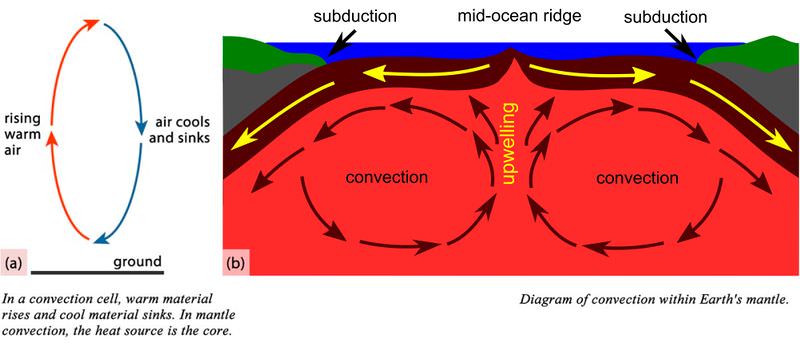What is a diamond delivery system?

Some events happened when Earth was younger and hotter that do not happen any more. Kimberlite pipes shot up from deep in the mantle. These pipes are the most important source of diamonds, which form at very high pressure. Most kimberlites surfaced long ago.
The two most important things about the mantle are as follows:
- It is made of semi-solid rock.
- It is hot.
Solid Rock

Figure 1. Peridotite is formed of crystals of olivine (green) and pyroxene (black).
Scientists know that the mantle is made of rock based on evidence from seismic waves, heat flow, and meteorites. The properties fit the ultramafic rock peridotite, which is made of the iron- and magnesium-rich silicate minerals (Figure 1). Peridotite is rarely found at Earth’s surface.
Heat Flow
Scientists know that the mantle is extremely hot because of the heat flowing outward from it and because of its physical properties.
Heat flows in two different ways within the Earth:
- Conduction: Heat is transferred through rapid collisions of atoms, which can only happen if the material is solid. Heat flows from warmer to cooler places until all are the same temperature. The mantle is hot mostly because of heat conducted from the core.
- Convection: If a material is able to move, even if it moves very slowly, convection currents can form.
Convection in the mantle is the same as convection in a pot of water on a stove. Convection currents within Earth’s mantle form as material near the core heats up. As the core heats the bottom layer of mantle material, particles move more rapidly, decreasing its density and causing it to rise. The rising material begins the convection current. When the warm material reaches the surface, it spreads horizontally. The material cools because it is no longer near the core. It eventually becomes cool and dense enough to sink back down into the mantle. At the bottom of the mantle, the material travels horizontally and is heated by the core. It reaches the location where warm mantle material rises, and the mantle convection cell is complete (Figure 2).

Figure 2. Convection
